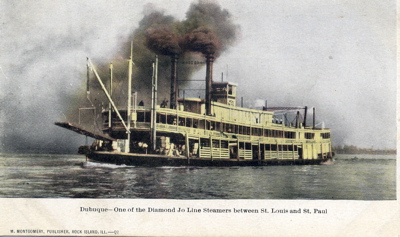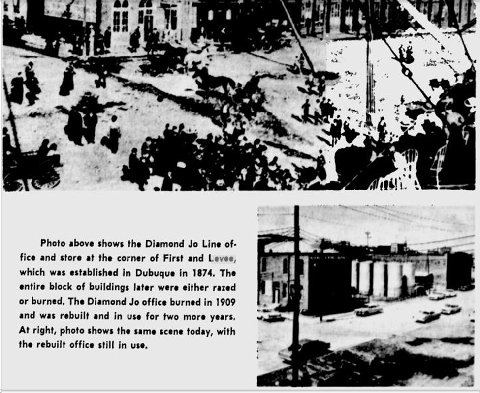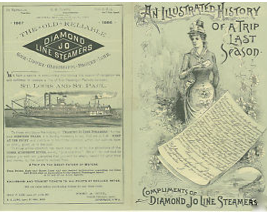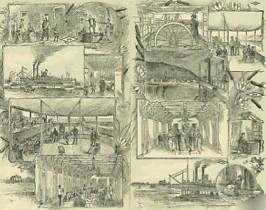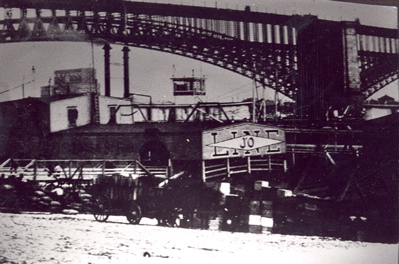Encyclopedia Dubuque
"Encyclopedia Dubuque is the online authority for all things Dubuque, written by the people who know the city best.”
Marshall Cohen—researcher and producer, CNN
Affiliated with the Local History Network of the State Historical Society of Iowa, and the Iowa Museum Association.
DIAMOND JO LINE: Difference between revisions
No edit summary |
No edit summary |
||
| Line 6: | Line 6: | ||
[[Image:quincy.jpg|right|thumb|250px|The familiar Diamond Jo sign on the steamboat Quincy. Photo courtesy: Bob Reding]] | [[Image:quincy.jpg|right|thumb|250px|The familiar Diamond Jo sign on the steamboat Quincy. Photo courtesy: Bob Reding]] | ||
The company was named for [[REYNOLDS, Joseph "Diamond Jo"|Joseph "Diamond Jo" REYNOLDS]], a prosperous businessman who made fortunes in milling, tanning, [[RAILROADS]], [[MINING]], and shipping. The origin of his name, often the source of wild stories, came from his habit of surrounding his name Jo, for Joseph, with four lines suggesting a diamond | The company was named for [[REYNOLDS, Joseph "Diamond Jo"|Joseph "Diamond Jo" REYNOLDS]], a prosperous businessman who made fortunes in milling, tanning, [[RAILROADS]], [[MINING]], and shipping. The origin of his name, often the source of wild stories, came from his habit of surrounding his name Jo, for Joseph, with four lines suggesting a diamond. | ||
In 1855 he and his wife, Mary E. (Morton), moved to Chicago, where he established a tannery. Customarily, he supplied his business with hides and furs by touring Iowa, Minnesota, and Wisconsin. Originally, he addressed his shipments to himself as J. Reynolds. But when he discovered that Chicago had another J. Reynolds, he developed his distinctive trademark of a diamond shape enclosing his nickname "Jo." | |||
His career change to wheat dealer for the Chicago market prompted him in 1860 to move to McGregor, Iowa, a major wheat market. To establish an efficient purchasing and shipping system, he invested in railroad line elevators in Iowa and Minnesota and entered steamboating to collect wheat along portions of the upper Mississippi. | |||
He had his first steamboat built at Lansing, Iowa, in 1862, but generally until 1868 he paid other boatmen to transport his wheat. Before he had operated "The Lansing" for long, the Minnesota Packet Company operating between Dubuque and St. Paul convinced Reynolds to sell them the boat while promising him that his business would be treated fairly. Before the end of the season, he found these promises to be worthless. | |||
[[ | Reynolds retaliated during the winter of 1862-1863 by constructing the steamer "Diamond Jo" and the barges "Fleming" and "Conger." He had other boats constructed and purchased others like the "Pittsburg" and "Gem City" from the Davidson line when it went out of business. The "Pittsburg" was renamed the "Dubuque." He reentered steamboating by forming the Chicago, Fulton, and River Line. The company's four steamers, including the Diamond Jo, and accompanying barges operated in connection with the Chicago and North Western Railroad out of Fulton, Illinois. The two firms arranged for freight exchanges to supply wheat to the Chicago market and deliver a variety of goods shipped westward by the railroad. | ||
In | |||
While based at Fulton, Reynolds's line became known as the Diamond Jo. However, the name was not formalized until the incorporation of the Diamond Jo Line in 1883. | |||
In 1874 Reynolds moved his general office from Fulton to Dubuque. In 1878 the Diamond Jo Company spent about one hundred and fifty thousand dollars and located permanently at [[EAGLE POINT]] where the [[DIAMOND JO BOATYARD]] was established. Seventy-eight men were employed in January, 1880. (1) The boatyard built and repaired Reynolds's boats as well as those of other upper Mississippi operators. Working together the Diamond Jo Company built the upper portions of boats and the [[IOWA IRON WORKS]] constructed the iron and steel sections. With Joseph Reynolds as president and general manager and [[DICKEY, Ernest M.|Ernest M. DICKEY]] as superintendent, the Diamond Jo Line built a barge with a double steel hull in 1886. | |||
The financial difficulties of the rival Keokuk Northern Line Packet Company enabled the efficient Reynolds to expand. In 1879 Diamond Jo boats began offering St. Paul-St. Louis service, and when the Keokuk Northern went bankrupt in 1880, Reynolds turned from his previous freight business to the passenger trade. In the 1880s the most famous Diamond Jo vessels, such as the Mary Morton, were luxurious passenger boats. When the successor of the Keokuk Northern ceased operating in 1890, the Diamond Jo Line was the only remaining organized steamboat company between St. Louis and St. Paul. | |||
The Diamond Jo Line passed to his widow, and after her death on August 2, 1895, to a group headed by her brother Jay. Finally, in 1911 it was sold to the Streckfus Steamboat Company. | |||
[[Image:dubuque-1.jpg|left|thumb|250px|The "Dubuque." Photo courtesy: Bob Reding]] | |||
[[Image:djl.jpg|right|thumb|350px|Telegraph Herald, Sept. 11, 1964. Image courtesy: Diane Harris]] | |||
In 1874 a building in Dubuque was constructed as the main office of the Diamond Jo Steamers. Originally the company was primarily involved in transporting grain. As this declined, transporting passengers took on greater importance | |||
With the death of Reynolds in 1891, the company belonged to and was operated by his brother-in-law, Jay Morton of Chicago. | With the death of Reynolds in 1891, the company belonged to and was operated by his brother-in-law, Jay Morton of Chicago. | ||
| Line 32: | Line 40: | ||
[[File:sidedeck.jpg|300px|thumb|left|The side deck on the "Dubuque.". Photo courtesy:http://www.riverboatdaves.com/postcards/d/dubuque/dubuque.html]] | [[File:sidedeck.jpg|300px|thumb|left|The side deck on the "Dubuque.". Photo courtesy:http://www.riverboatdaves.com/postcards/d/dubuque/dubuque.html]] | ||
Revision as of 02:09, 4 December 2014
This entry is being edited.
DIAMOND JO LINE. In December 1977, the former Diamond Jo Boat Store and Office, now property of Inland Molasses Company at Jones and Terminal STREETS, was added to the NATIONAL REGISTER OF HISTORIC PLACES. The building, which once had an office at the end facing the river and a steamboat warehouse behind it, is the only remaining building in Dubuque traceable to one of America's great steamboat companies.
The company was named for Joseph "Diamond Jo" REYNOLDS, a prosperous businessman who made fortunes in milling, tanning, RAILROADS, MINING, and shipping. The origin of his name, often the source of wild stories, came from his habit of surrounding his name Jo, for Joseph, with four lines suggesting a diamond.
In 1855 he and his wife, Mary E. (Morton), moved to Chicago, where he established a tannery. Customarily, he supplied his business with hides and furs by touring Iowa, Minnesota, and Wisconsin. Originally, he addressed his shipments to himself as J. Reynolds. But when he discovered that Chicago had another J. Reynolds, he developed his distinctive trademark of a diamond shape enclosing his nickname "Jo."
His career change to wheat dealer for the Chicago market prompted him in 1860 to move to McGregor, Iowa, a major wheat market. To establish an efficient purchasing and shipping system, he invested in railroad line elevators in Iowa and Minnesota and entered steamboating to collect wheat along portions of the upper Mississippi.
He had his first steamboat built at Lansing, Iowa, in 1862, but generally until 1868 he paid other boatmen to transport his wheat. Before he had operated "The Lansing" for long, the Minnesota Packet Company operating between Dubuque and St. Paul convinced Reynolds to sell them the boat while promising him that his business would be treated fairly. Before the end of the season, he found these promises to be worthless.
Reynolds retaliated during the winter of 1862-1863 by constructing the steamer "Diamond Jo" and the barges "Fleming" and "Conger." He had other boats constructed and purchased others like the "Pittsburg" and "Gem City" from the Davidson line when it went out of business. The "Pittsburg" was renamed the "Dubuque." He reentered steamboating by forming the Chicago, Fulton, and River Line. The company's four steamers, including the Diamond Jo, and accompanying barges operated in connection with the Chicago and North Western Railroad out of Fulton, Illinois. The two firms arranged for freight exchanges to supply wheat to the Chicago market and deliver a variety of goods shipped westward by the railroad.
While based at Fulton, Reynolds's line became known as the Diamond Jo. However, the name was not formalized until the incorporation of the Diamond Jo Line in 1883.
In 1874 Reynolds moved his general office from Fulton to Dubuque. In 1878 the Diamond Jo Company spent about one hundred and fifty thousand dollars and located permanently at EAGLE POINT where the DIAMOND JO BOATYARD was established. Seventy-eight men were employed in January, 1880. (1) The boatyard built and repaired Reynolds's boats as well as those of other upper Mississippi operators. Working together the Diamond Jo Company built the upper portions of boats and the IOWA IRON WORKS constructed the iron and steel sections. With Joseph Reynolds as president and general manager and Ernest M. DICKEY as superintendent, the Diamond Jo Line built a barge with a double steel hull in 1886.
The financial difficulties of the rival Keokuk Northern Line Packet Company enabled the efficient Reynolds to expand. In 1879 Diamond Jo boats began offering St. Paul-St. Louis service, and when the Keokuk Northern went bankrupt in 1880, Reynolds turned from his previous freight business to the passenger trade. In the 1880s the most famous Diamond Jo vessels, such as the Mary Morton, were luxurious passenger boats. When the successor of the Keokuk Northern ceased operating in 1890, the Diamond Jo Line was the only remaining organized steamboat company between St. Louis and St. Paul.
The Diamond Jo Line passed to his widow, and after her death on August 2, 1895, to a group headed by her brother Jay. Finally, in 1911 it was sold to the Streckfus Steamboat Company.
In 1874 a building in Dubuque was constructed as the main office of the Diamond Jo Steamers. Originally the company was primarily involved in transporting grain. As this declined, transporting passengers took on greater importance
With the death of Reynolds in 1891, the company belonged to and was operated by his brother-in-law, Jay Morton of Chicago.
On February 3, 1911 the company was sold to the Streckfus Company of Rock Island. For $200,000 the Streckfus Company obtained the steamers St. Paul, Quincy, Dubuque and Sidney. In addition it received the wharves, warehouses and boatyards of the company.
The Streckfus Company announced that it intended to remodel the Sidney into a first class excursion boat to take the place of the J. S. which was destroyed by fire near Trempealeau, Wisconsin during the summer of 1910. The Sidney was to be ready for the excursion season beginning on May 1st and would sail between Peoria and St. Paul during the summer and south at New Orleans during the winter. The other three steamers would be refitted and placed into regular packet trade between St. Louis and St. Paul during the summer and St. Louis to New Orleans during the winter. While general offices of the new company would remain in St. Louis, it was announced that Dubuque would remain important since it was a midway point between there at St. Paul.
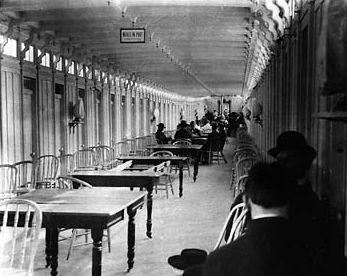

Boats Constructed:
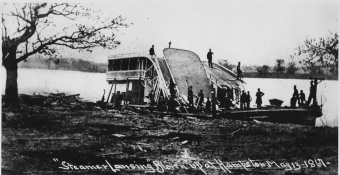
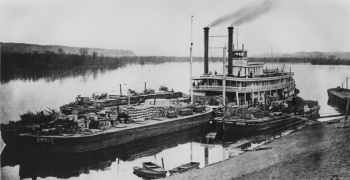
1867, JOHN C. GAULT, propeller driven towboat.
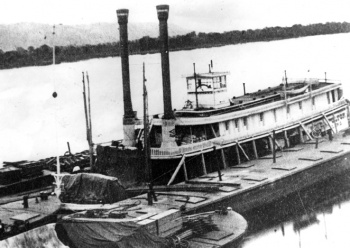
186?9?, early spring?,-72, LADY PIKE
1869, July, Chartered STERLING to help with enormous work load.
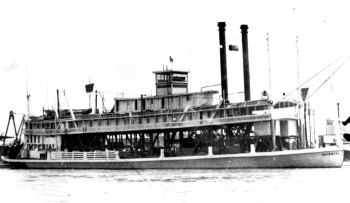
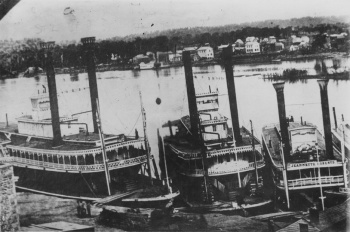
1871, Chartered briefly, BANNOCK CITY
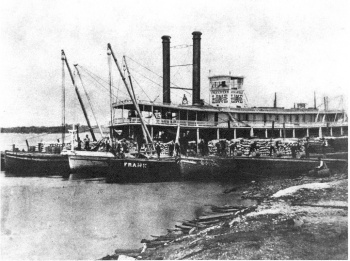

1873-81, IMPERIAL a powerful towboat
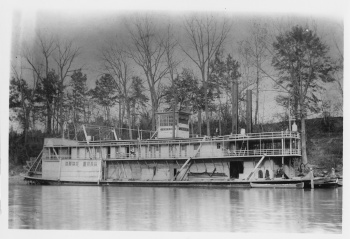
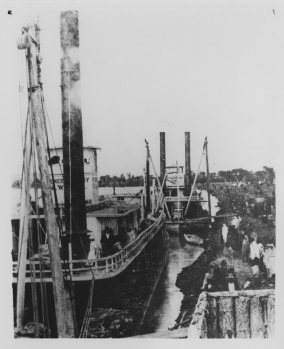

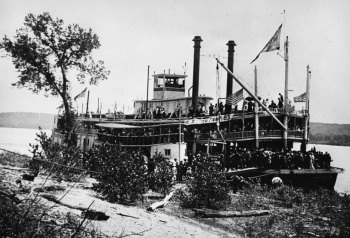
189?-1901 WASHINGTON
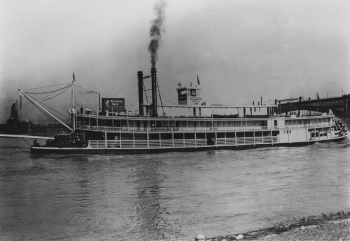
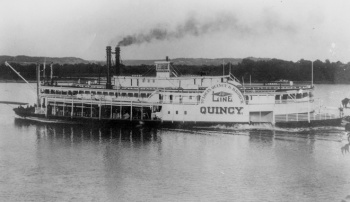
---
Source:
1. Oldt, Franklin. History of Dubuque County, Iowa. Chicago: Western Historical Company, 1880. Online: http://www.ebooksread.com/authors-eng/franklin-t-oldt/history-of-dubuque-county-iowa-being-a-general-survey-of-dubuque-county-histor-tdl/page-26-history-of-dubuque-county-iowa-being-a-general-survey-of-dubuque-county-histor-tdl.shtml
2. "Dubuque, A Boat Building Center," Telegraph Herald, August 21, 1910 Part II, p. 1
"Diamond Jo Line Boats are Sold," Telegraph Herald, February 3, 1911
Hudson, David; Bergman, Marvin; Horton, Loren. The Biographical Dictionary of Iowa. Iowa City: University of Iowa Press, 2008
Riverboat Dave's. "Riverboat Companies and Owners," Online: http://www.riverboatdaves.com/owners/d.html



